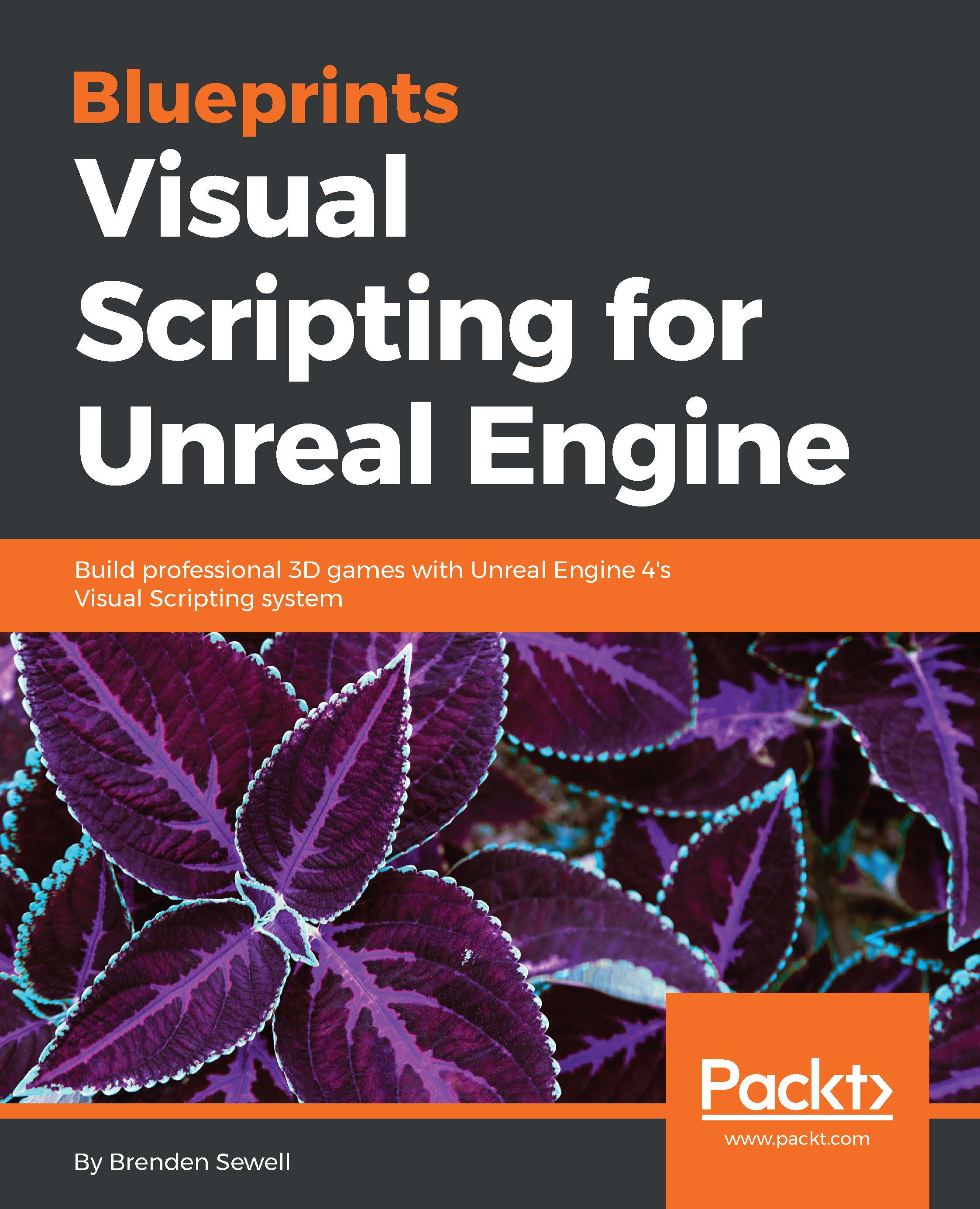-
Book Overview & Buying

-
Table Of Contents

Blueprints Visual Scripting for Unreal engine
By :

Blueprints Visual Scripting for Unreal engine
By:
Overview of this book
Blueprints Visual Scripting for Unreal Engine is a step-by-step approach to building a fully functional game, one system at a time. Starting with a basic First Person Shooter template, each chapter will extend the prototype to create an increasingly complex and robust game experience. You will progress from creating basic shooting mechanics to gradually more complex systems that will generate user interface elements and intelligent enemy behavior. Focusing on universally applicable skills, the expertise you will develop in utilizing Blueprints can translate to other types of genres.
By the time you finish the book, you will have a fully functional First Person Shooter game and the skills necessary to expand on the game to develop an entertaining, memorable experience for your players.
From making customizations to player movement to creating new AI and game mechanics from scratch, you will discover everything you need to know to get started with game development using Blueprints and Unreal Engine 4.
Table of Contents (10 chapters)
Preface
 Free Chapter
Free Chapter
1. Object Interaction with Blueprints
2. Enhancing Player Abilities
3. Creating Screen UI Elements
4. Creating Constraints and Gameplay Objectives
5. Making Moving Enemies with AI
6. Upgrading the AI Enemies
7. Tracking Game States and Applying Finishing Touches
8. Building and Publishing
Index
